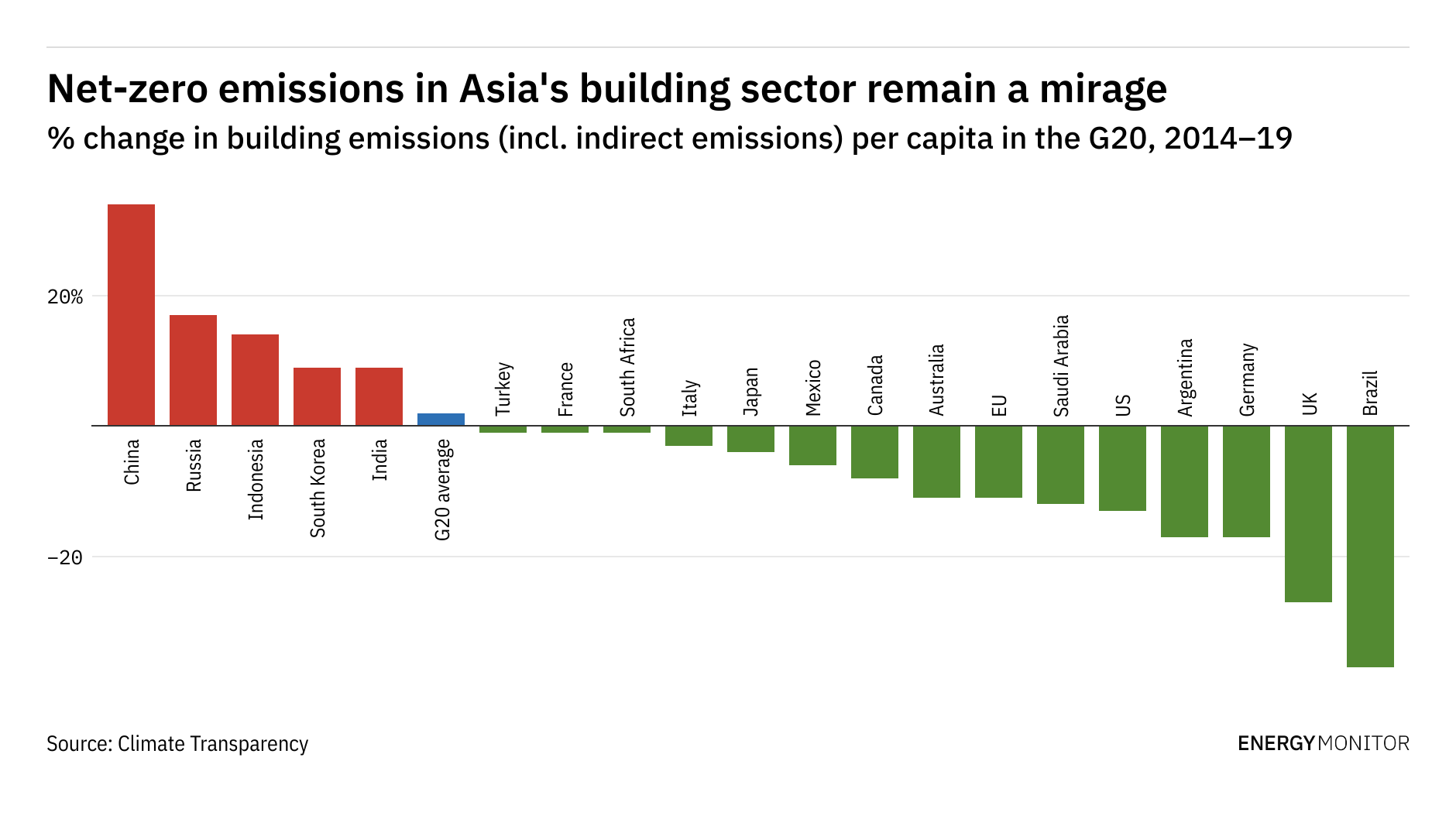
On both sides of the Atlantic, efforts to decarbonise buildings are being ramped up. In Asia, however, trends are going in the opposite direction with per capita emissions from buildings on the rise.
In the EU, per capita emissions from buildings decreased by 11% from 2014 to 2019, and the bloc last year adopted a Renovation Wave strategy with the goal of at least doubling renovation rates in the next ten years. The aim is to decrease the energy consumption of buildings by 14% and decrease their greenhouse gas emissions by 60% over the next decade.

Discover B2B Marketing That Performs
Combine business intelligence and editorial excellence to reach engaged professionals across 36 leading media platforms.
Energy efficiency is also part of European Covid recovery packages, with a total of $26bn set aside for domestic energy efficiency measures across Germany, France, the UK, Spain and Poland (although experts say much, much more is needed).
In the US, the decarbonisation of the built environment is gaining traction with President Biden’s vision for a clean energy economy. Prior to the election, he committed to retrofit and build millions of new sustainable homes. From his first day in office, he has issued executive orders covering energy efficiency standards and building codes, and committed to deliver a carbon-free electricity grid by 2035.
However, across G20 countries as a whole, emissions from the built environment rose by 0.9% on average in 2019 and 3.2% in 2018, shows the 2020 Climate Transparency Report, an annual review of G20 countries’ climate action prepared by research organisations and NGOs. All G20 countries whose per capita building emissions increased are based in Asia, an analysis by Energy Monitor reveals.

US Tariffs are shifting - will you react or anticipate?
Don’t let policy changes catch you off guard. Stay proactive with real-time data and expert analysis.
By GlobalDataOne reason behind the emissions increase in Asia, in particular in China, is pre-pandemic construction growth of 4.4% a year compared to 1.2% and 2.3% in North America and Europe, respectively. Despite a dip in construction due to the pandemic, the long-term prognosis suggests emissions will continue to rise with 78% of China’s population expected to be urbanised by 2050 compared to 62% today.
The region is also still heavily reliant on fossil fuels to heat buildings.
Such trends do not bode well for climate change, given global emissions from the building sector must halve by 2030 and drop to 80% below 2010 levels by 2050 if warming is to be kept below 1.5°C.





